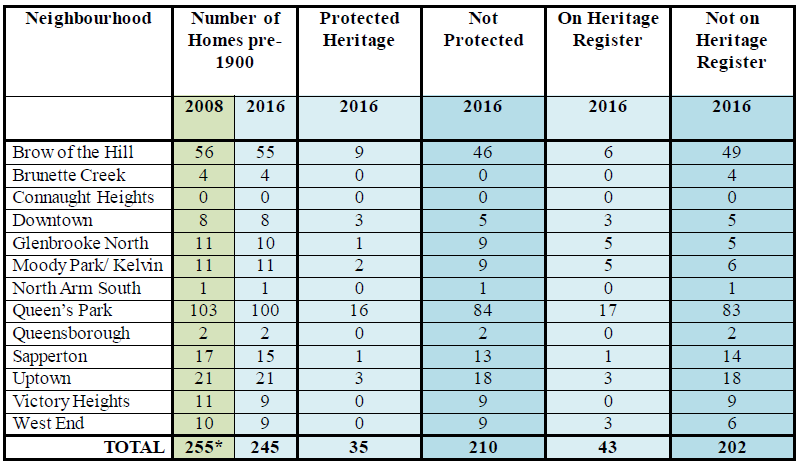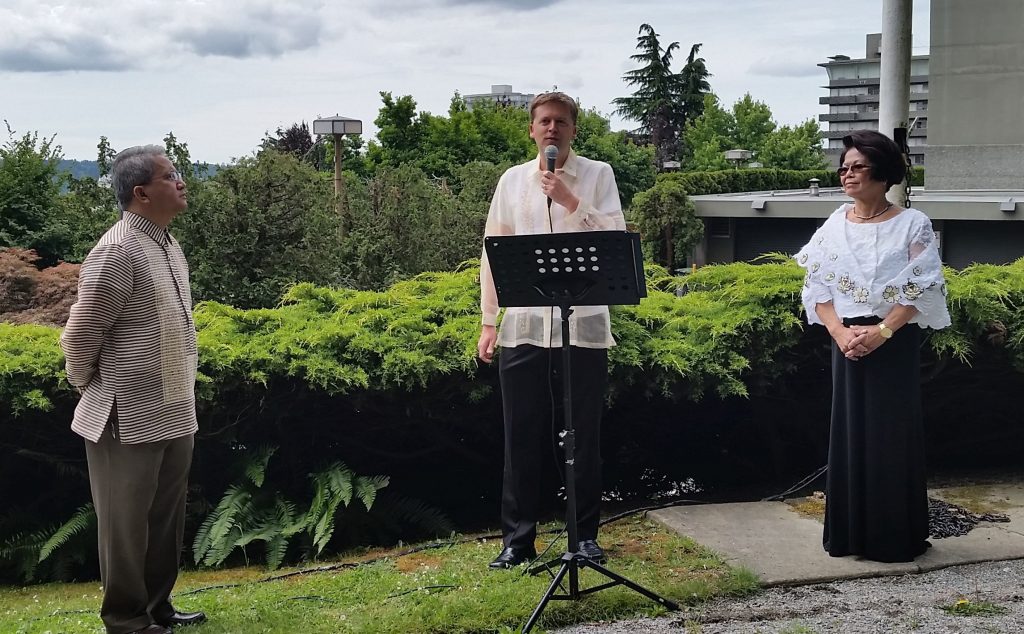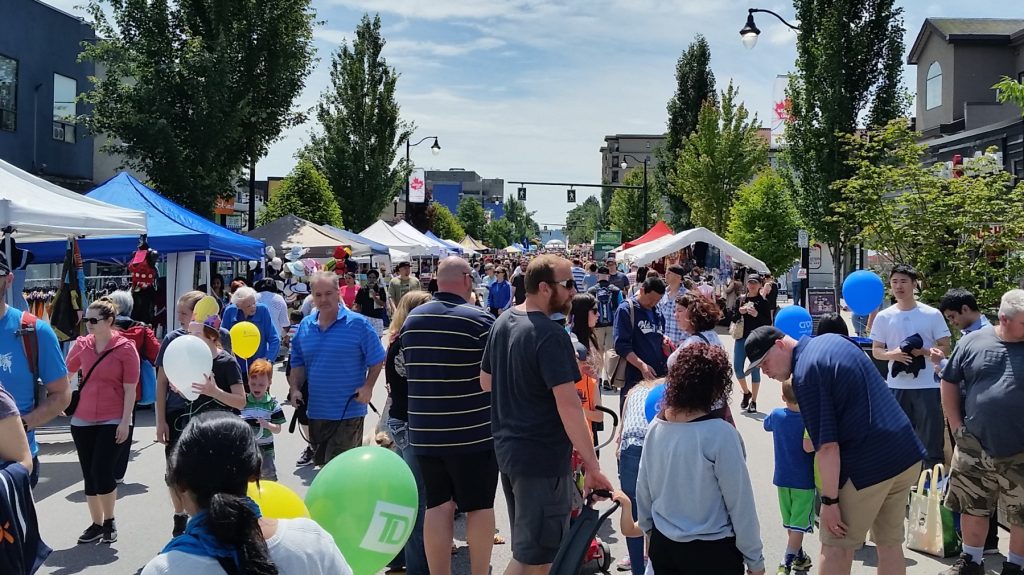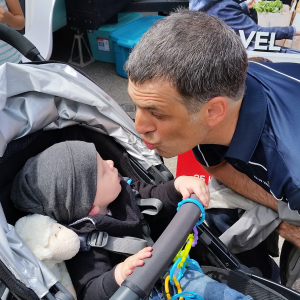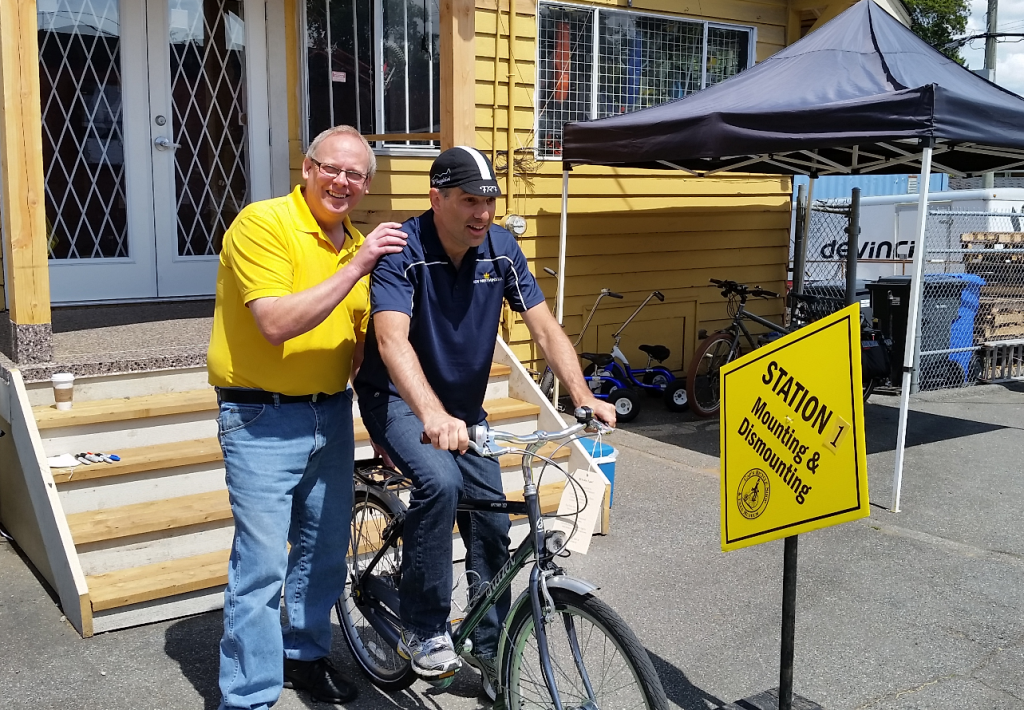The first post-summer meeting occurred on August 29th, which is really only about 2/3 of the way through summer, but the levers and tubes in the Mayor’s Office that control the weather have been dialed back towards continued cooling and precipitation, and the days have shortened enough that it was dark outside before the end of the meeting.
As it was the last meeting of the month we had a Public Hearing at the start, with only one item on the agenda:
Zoning Amendment (Housekeeping) Bylaw No. 7862, 2016 (415 and 444 East Columbia Street)
When a couple of commercial properties in Sapperton were zoned, the specific use “pharmacy” was not included in the zoning language, although that same use is allowed in pretty much every other commercial space in the neighbourhood. It so happens one of the vacant spaces is a perfect fit for a successful pharmacy in Sapperton hoping to expand. The best way to manage this problem is to fix the zoning language for the two properties that were missed all those years ago.
We had two people present written submissions, one in favour (the proponent) and one opposed (who felt there were already too many pharmacies in the City). We had one person appear at the Public Hearing, requesting clarity about the change, without expressing an opinion for or against.
Council moved to give the zoning amendment a third reading.
We then moved into our Regular Meeting agenda, where we started with the Bylaw just discussed in Public Hearing:
Zoning Amendment (Housekeeping) Bylaw No. 7862, 2016
The above-mentioned Zoning Amendment Bylaw was given Third Reading.
The following Items were moved on Consent:
Hyack Square Dedication Brick Revised Layout and Budget
As part of the Wait For Me Daddy celebrations a couple of years ago, the City set up a Dedication Brick program, where you could purchase a brick with an inscription and have it added to the paving around the statue for perpetuity.
Sales of the bricks didn’t necessarily meet expectations, although we still expect something like 200 dedicated bricks to be installed. The numbers have led to a bit of a re-design of the paving plan.
Arts Strategy Update
The City’s existing Arts Strategy dates back to 2008 – it is time for a refresh. The City has grown a lot since 2008, as has the Arts scene. The Anvil Centre being the largest example of this change, along with the upcoming renovation of the Massy Theatre, but there is so much more. The hugely successful annual Cultural Crawl, the opening of interesting arts scenes from the Heritage Grill to Old Crow Coffee and 100 Braid Studios, the re-alignment of the City’s festival season, secure funding for our Public Art program…
There is a need to refresh the strategy to leverage the best we have for continued growth of the City’s arts and culture, and make the most of the support the City provides. A plan will be put together in the next year to inform the 2017-2022 planning window. Keep your eyes open for opportunities to take part!
508 Agnes Street: HRA Amendment Bylaw No. 7817, 2016
This Heritage Revitalization Agreement is a few years old, and the Owner has not been able to complete all of the work included in the agreement – heritage renovations often have their own timeline. The delays are well defended and reasonable, but the Agreement has an expiry date, and so Council needs to agree to extend the HRA to allow the owners to complete their work.
97 Braid Street: Temporary Use Permit for Off-Site Parking for Hospital Staff and Construction Workers during Phase 1 RCH Redevelopment
During the upcoming major works at RCH, the regular parking patterns will be disturbed, both for regular hospital employees who are losing part of their lot, and for construction workers. Fraser Health has swung a deal with the owners of 97 Braid to set up temporary parking in the big empty lot at Brain and Brunette in front of the Sky Train Station.
The City had concerns that charging Hospital staff and construction workers $40 a month to park in an outdoor gravel lot more than kilometre away then rely on a shuttle, is going to exacerbate the situation where RCH employees and contractors park in residential neighbourhoods around the hospitals. In light of this, Fraser Health will work with our Bylaws staff to step up parking enforcement in Sapperton residential neighbourhoods.
88 Tenth Street (Boston Pizza): DVP00610 to vary Sign Bylaw
Boston Pizza want to change some of their signage to make their business more visible from Stewardson Way, which requires a variance of the sign bylaw. The signage is not too obtrusive, and fits with the design of the building, so I have no reason to oppose the idea, except maybe that I have never forgiven, and will never forgive, the dirty stinking Bruins. F#*&$% Marchand and his fat, stupid face.
Proposed Sewerage and Drainage Regulation Amendment Bylaw No.
7863, 2016 and Associated Bylaw Enforcement Amendment Bylaw No.
7860, 2016
Our Sewerage and Drainage Bylaw is being updated to better regulate the discharge of water from construction sites. When they dig a hole and put a foundation for a building, construction crews need to get rid of the rainwater and (sometimes) groundwater they encounter.
This Bylaw change will allow us to better control the quality of those water discharges that go to our storm drainage system to reduce sediment that had negative impacts on our storm drainage infrastructure (pipes, valves, pumps) and contaminants like concrete fines which can impact water pH and damage aquatic habitat when the water is eventually discharged to the river.
2015 Annual Water Quality Monitoring Report
We have a regulatory requirement to test the water quality in the City to assure it meets provincial drinking water standards for things like dissolved metals, bacteria and chlorine levels. And we are required to report this out. The reports show the water is safe to drink. No need to buy the bottled stuff.
Appointment of External Auditor
The City, like most organizations handling public money, need to hire and pay for an external auditor to make sure our books meet all applicable accounting standards. We re-hire every 5 years, and the time is now.
1102, 1110, 1116 and 1122 Salter Street, OCP Amendment, Rezoning, Public Consultation
This mixed housing development in Queensborough will include small detached houses, duplexes, strata townhouses, and freehold row homes, and will result in the dedication of some land for a park.
This project has to go through several levels of review, including public consultation, and will eventually got to Public Hearing, so I will hold my comments until then.
1023 Third Avenue: HRA and Heritage Designation – Preliminary Report
Another Preliminary report, with committee and public consultation work to come, but this project looks interesting. The Heritage Home on the lot has been increasingly in bad repair over the last couple of years, so I am happy to see a serious effort being put into preserving it and yet finding room for more innovative and sensitive infill in the Brow neighbourhood.
Consent Agenda passed, our regular agenda items were then discussed, starting with an Opportunity to Be Heard:
709 and 705 Cumberland Street: Development Variance Permit
These properties were created as a subdivision of a single lot as part of a Heritage Restoration Agreement for the Historic house on the lot. Unfortunately, during renovation of the heritage home, the conditions of the HRA were not able to be kept, and the heritage home was lost. Therefore, the City is taking away the subdivision that was granted. This requires a Development Variance to change the original development plan. No-one showed up to exercise their right to be heard.
Amongst the Presentations to Council was a reporting out by TransLink on the recent Public Consultations for the Pattullo Bridge replacement project. There will be an entire blog topic here, coming soon, so check back in if you really want to hear my pontificating.
Piling Noise
I don’t know if you noticed they are driving piles for two construction projects downtown. The City has construction noise bylaws that limit what times loud noises can be made, but we ae realizing that pile driving noise is different that the running of generators and powersaws. It has been loud downtown and on the Quayside.
Now, we recognize that many of the people most disturbed by this work live in building that are, themselves, built on piles. However, “we’ve always done it this way” is a terrible reason to accept any standard, so the Mayor has asked Staff to explore what other jurisdictions do in regards to regulating pile driving, if we can adjust timing or methods, and to ask if there are other technology solutions that are less disruptive (such as using vibration installation, drilling, or even noise suppression at the driving site).
It may not mean immediate relief, but there are still building lots downtown and on the waterfront, and pile driving is not ending with these projects, I am glad we are looking forward to reduce the impacts (pun!) of future development.
OCP – Draft Land Use Designation Map & Community Consultation
Yes, the OCP is back for more Consultation. I will have more to say in future blog posts about this, but we now have a Draft land use map, based on the consultation that came out of all of those earlier maps you may have seen if you took part.
To make sense of the new map, you need to read the new Land Use Designations. You also need to recognize that these changes have no effect on the current land use, and that zoning requirements about what kind of development will fit on what kind of lot are yet to come.
However, it is worth your time to look at the map, and to take part in the upcoming public consultation meetings coming up in late September and October to get your two cents in on the future of the City. All the info you want or need is here.
Fraser River Middle School – School Bus
According to the Ministry of Education, a Grade 8 student can get themselves to school 4.8km away. That means that, according to the Ministry’s funding mechanism, no student in New Westminster lives too far from the new Fraser River Middle School to walk there.
Some parents of the Connaught Heights and West End areas disagree, and have taken matters into their own hands. They plan to contract a bus service, and run it as a neighbourhood co-op. This after being frustrated by the Ministry’s refusal to fund a bus, and TransLink’s refusal to adjust their service to accommodate school routes (which must sound familiar to Queensborough parents of NWSS students!). They have approached some funding partners to reduce the burden on the parents, and to help get the proof-of-concept running.
The City doesn’t run school busses, full stop. It is not in our mandate, and no other City in the Lower Mainland does it (I don’t even know of any in BC that do). The Ministry of Education’s shift away from funding school busses over the last decade have been shameful, but the City stepping in creates all kinds of problems, from cost to liability, to basic fairness. Of the $5.48 per mil you paid in Property Taxes this year, $1.67 per mil goes directly to the Ministry of Education – we already collect taxes for them.
That’s not to say the City doesn’t have a role in school transportation from our $3.42 per mil. We need to provide safe sidewalks, crosswalks, and roads. We need our police to enforce school zones and encourage safe driving around schools. We have created Safe Routes maps, and continue to make infrastructure improvements. We also help promote safe cycling courses in the schools, and work with the local School District implement transportation plans for every school.
However, this initiative is not the City getting into the school bus business. It is providing some seed funding to a community- lead initiative, financed by parents to benefit a neighbourhood and (hopefully) reduce the number of cars running around our residential nieghbourhoods twice a day. A few months ago, the City agreed to provide a bit of seed funding to assist the Downtown-Uptown Connector shuttle bus (“DUC”), to help determine if this community-led initiative is viable and serves a populace. That is clearly within our mandate, and I am happy to support it.
New Westminster Civic Infrastructure Loan Authorization Bylaw No. 7842, 2016 – Results of the Alternative Approval Process
To the surprise of no-one, the AAP failed to receive the required number of submissions from the public to force a referendum on this loan initiative, with about 0.2% response rate (which falls short of the 10% required). The City is now authorized to borrow up to $28.3Million from the Municipal Finance Authority to fund several infrastructure initiatives.
Consideration of Heritage Alteration Permit Applications during the Heritage Control Period in the Queen’s Park Neighbourhood
This Item and two Demolition Permit applications were tabled by Council for consideration in a future meeting – meaning we will have more discussion about this in two weeks at our next meeting. For now the most I can say is that the types of concerns raised by delegates at Council in regards to the policy developed around the Heritage Control Period are a pretty good summary of the reasons why we tabled these discussions until staff can provide Council with more information to support decision making on these issues.
We then did the usual Bylaws shuffle:
Sewerage and Drainage Regulation Amendment Bylaw No. 7863, 2016
Bylaw Notice Enforcement Amendment Bylaw No. 7860, 2016
As mentioned above, these Bylaws regulating discharges of water from construction sites was given three readings.
HRA (508 Agnes Street) Amendment Bylaw No. 7866, 2016
As mentioned above, this extension for the HRA to give the owners more time to complete their renovation work was given three readings.
Queensborough Special Study Area – OCP Bylaw No. 7822, 2016
Zoning Amendment Bylaw No. 7823, 2016
As last discussed in the Public Hearing on May 30, 2016, these changes to the land use in parts of Queensborough were adopted by Council.
Civic Infrastructure Loan Authorization No. 7842, 2016
As mentioned above, this authorization for the Infrastructure Loan was adopted by Council.
And that, but for some correspondence basically referred to Staff, was the end of summer exciting return to regular Council programming. See you in two weeks.
